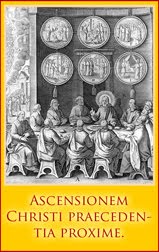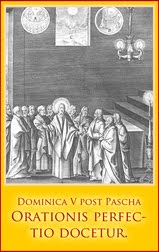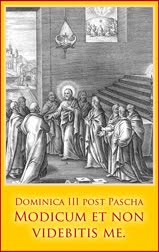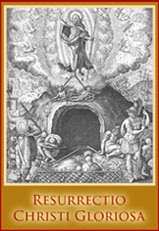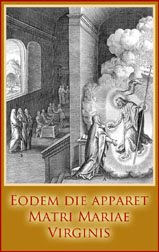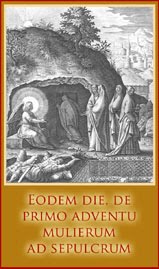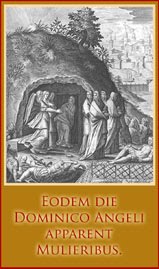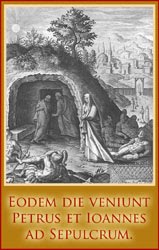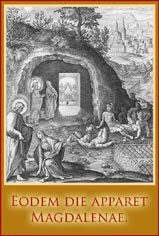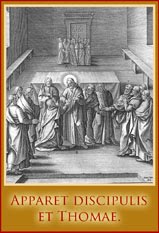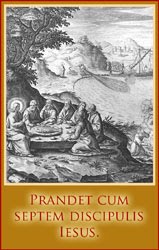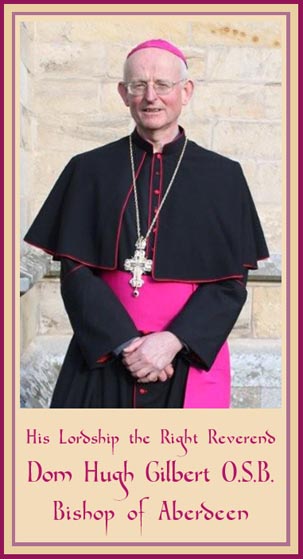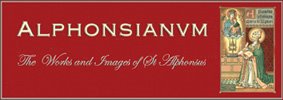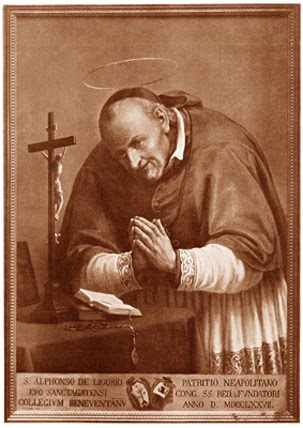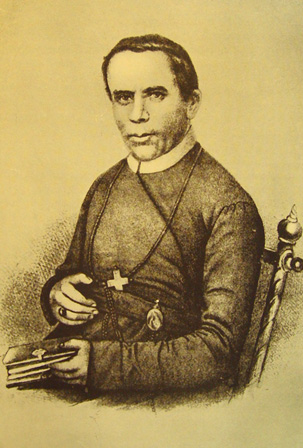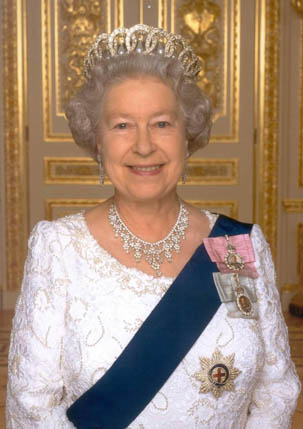Dear John and all who have written to us about Sedevacantism,
The leaders of the Sedevacantist movement have many seemingly convincing arguments to demonstrate that the Popes after Pope Pius XII are not true Popes and have fallen from the Catholic faith.
They draw their arguments from the statements of Saints, Canon Law, Papal Bulls and historical examples to name but a few sources. The sheer volume of information that they present on this important subject needs to be accepted or investigated. Most people do not have the time nor the qualifications to critically evaluate the historical, theological or canonical sources.
Goliath:
"The 'Cassiciacum thesis' is the must-read
for a clearer picture!"
for a clearer picture!"
Before the Sedevacantist armoury of arguments
many feel helpless.
But this is not the way to go.
There is another simpler, sharper way to cut to the chase
and arrive at the truth.
Trial by Death
is the quickest and surest way to obtain the truth on this matter.
The leaders of Sedevacantism propose that we believe their teaching that there is no Pope.
And
The Pope of the Day proposes that we believe that he is a true Pope.
Here is how the Trial by Death works:
For the Sedevacantist leaders to be right they must have died:
From heaven God could lend them support after death by granting through their intercession an extraordinary miracle
but one thing is clear: God could never grant miracles to a dead anti-pope.
For the Pope to be right he must have died:
From heaven God could lend him support after death by granting through his intercession an extraordinary miracle
but one thing is clear: God could never grant miracles to a dead sedevacantist leader.
The Trial by Death: Judgment
The miracle was instant and extraordinary.
The miracle took place 25 May, 1966.
The miracle was recorded 5 years before the Sedevacantist theory was first published.
The miracle was accompanied by a vision of Pope John XXIII dressed as a Pope.
God could not permit that miracle if John XXIII was not Pope.
On the weight of evidence there is Divine support to affirm that Pope John XXIII was a true Pope.
God has raised him in glory and works wonders for him.
The Sedevacantist Leaders fail the Trial by Death.
There is no extraordinary miracle to support the Sedevacantism of
Fr Joaquín Sáenz y Arriaga, S.J.
who had three Doctorates and wrote over 50 books.
He lies in a silent grave and God works him no wonders.
There is no extraordinary miracle to support
Archbishop Pierre Martin Ngô Đình Thục
who had three Doctorates.
He lies in a silent grave and God works him no wonders.
There is no extraordinary miracle to support the Cassiciacum thesis of
Bishop Guerard des Lauriers, O.P.
who had three Doctorates.
He lies in a silent grave and God works him no wonders either.
Amen, I say to you: Unless you be converted and become as little children,
ye shall not enter into the kingdom of heaven.
(Mt. 18:3)
_____________________________
For those who wish to read it
here is
Sister Caterina's Miracle.
I would like you to read the following. When you do, remember how Our Lord rebuked the Jews because even with miracles they would not accept Him: Jesus answered them: I speak to you, and you believe not: the works that I do in the name of my Father, they give testimony of me. But you do not believe, because you are not of my sheep. (John X, 25) Our Lord does not permit miracles to lead us to false conclusions. Some miracles almost force us to believe. I think of the Shroud of Turin in which, from modern science, we discover miracles that were unseen by previous generations and left for us to discover; it is the same with the tilma of Our Lady of Guadalupe. The following does not compare with these two great miracles but it is an amazing miracle nonetheless, and meant for our time:
The Sede Vacante device used by the Holy See.
In 1962 a young novice, Sister Caterina started having problems with her health several months after having been clothed in the habit. She was 18 years of age. She began to feel a constant intercostal pain between her stomach and heart. Until that time her health had been very good, so she ignored the pain. She thought perhaps she had knocked against a piece of furniture or something. The pain continued for a couple of months, and one night she had a hemorrage that frightened her. She was in her room. She felt like vomiting, ran to the sink and found her mouth full of very red blood. Since they had taught her during nursing school that very red blood came from the chest area, she thought she had contracted consumption; with a sickness like that, her life in the convent was finished."The rule of our Congregation," she said, "is for all aspiring religious to be healthy in order to face the sacrifices and work that a hospital requires. If a nun is ill, she is sent home before pronouncing her vows. I had passed the stage of aspirant, the postulant, and a few months prior to this incident I had been clothed in the religious habit, but I still had yet to pronounce my vows. So if my superiors had discovered I was ill with phthisis, they would have been obliged to send me home."
She decided not to say anything to anyone. For several nights she could not sleep, but then, seeing that the hemorrage failed to return and the persistent intercostal pain had disappeared, she thought the danger had passed and took up her normal life again.
Sister Caterina as a young sister.
Nothing happened for seven months. Then suddenly, with no warning symptoms, there was another terrible hemorrage. This was followed, after a few hours, by another, even more abundant hemorrage, which left her drained of all energy. This time the situation could not be hidden.Her Superiors did not send her away. They tried to help her. There were doctors’ visits, clinical examinations, check-ups. The most celebrated specialists in Naples were consulted on the case: Professors Piroli, Capozzi, Ruggero, Grassi, Doctors Caracciolo, Cannata, Maisano. There were x-rays of the chest and stomach and stratigraphs. No one succeeded in finding the reason for her hemorrages.
In 1964, since the doctors at the Ospedali Riuniti had declared there was no explanation for her illness, the young Sister was transferred to Ascalesi Hospital, under the care of Professor Alfonso D’Avino, director of the otorhinolaryngology department. An esophogascope revealed a hemorralgic area in the chest area. It seemed that all of the sister’s troubles came from there. She was therefore taken to the Pellegrini Hospital, to Professor Giovanni Bile, a famous hematologist, but he, too, was unable to improve the situation.
Sister Caterina said: "They told me that there was another person I could consult: Professor Giuseppe Zannini, director of the Surgical Semeiotics Institute of the University of Naples and a specialist in the surgery of blood vessels: an important international personality in the field of medicine. To obtain a visit with him was not easy, but when he found out what the case was about, he wanted to see me. He immediately took my case to heart..."
After a long examination and minute analysis of all the medical reports of his colleagues, Professor Zannini began a new cure that lasted five months. But the situation never changed, so the Professor decided to operate.
She was hospitalized and underwent an operation which lasted for five hours. The inside of her stomach was completely covered with a strange and rare form of ulcerous tumours, caused, perhaps, by the improper functioning of the pancreas and spleen. The Professor was obliged to remove her stomach, except for a small piece the size of a prune. He also removed the pancreas and spleen. The esophagus was connected directly to the intestine. It was also necessary to cut the aorta making a deviation of the blood circulation. It was a delicate operation and the probabilities for the patient to come out of the operating room alive were quite slim.
Our Lady of Pompei.
Before the operation, Sister Caterina tells us, I had prayed to the Holy Virgin of Pompei, to whom I am very devout. The day after the operation, while I was thanking the Virgin for having come through the operation safely, a Sister from our Congregation told me: "It was Pope John XXIII who saved you. I had placed his image on the bed of the operating room and had continued to pray throughout the operation." She gave me the Pope’s image and told me to place myself under his protection. I admired John XXIII very much, but had never thought of praying to him. I answered: "Thank you for what you have done for me, but I am convinced that it was the Holy Virgin of Pompei who protected me, and I will continue to pray to her. " I placed the image of Pope John on the nightstand, as if it served no purpose for me.In the days following the surgery, Sister Caterina’s health, instead of improving, continued to worsen. During the first night, the nun had a collapse; after several days, she had an intestinal block. Professor Zannini was very worried, and thought that another operation was necessary. The sisters continued to pray to Pope John and Sister Caterina to the Holy Virgin of Pompei. Nine days after the operation, the nun’s condition suddenly improved.
"Three days later, while I was sipping some liquid, I became cyanotic and lost consciousness." The doctors hurried to provide her with oxygen. "They examined me and found I had pleurisy. I was depressed. You have to pray to Pope John my sisters repeated to me. I was convinced and began to pray to the good Pope. Ten days later I was able to leave the clinic."
The improvement was once again short-lived. Two weeks later, Sister Caterina started to vomit great quantities of gastric fluids. They were so acid that they burnt her skin and the lower part of her face was completely sore. Since she couldn’t hold anything down in her stomach, she was nourished through phleboclysis. Professor Zannini was still very worried. He decided to send her home, to Potenza. Perhaps the air of her home town would help her. But two months later Sister Caterina returned to Naples, in worse condition than when she had left. She looked as if she were already dead.
"On 14 May 1966, following a serious crisis of vomiting, I felt my abdomen and it was completely wet," recounts the religious. "I called a sister to have her look at it: gastric fluids, blood and that little amount of orange juice I had just drunk were flowing out of a hole that had opened on my abdomen. A doctor was called. He said there was a perforation, which had caused an external fistula. There was diffused peritonitis. My fever was very high. The situation was desperate. Professor Zannini was informed, and he had me hospitalized immediately. He ordered some medicines and decided to wait to see how the crisis would devolop, because surgical intervention under those conditions was unthinkable".
"We Daughters of Charity pronounce our vows five years after having donned the habit. The rule provides for exceptions, however, when a young sister is about to die. This was my case. So on the 19th of May, 1966, I pronounced my vows, and I was immediately administered the Extreme Unction.
"On the 22nd of May a sister brought me a relic of Pope John’s from Rome: a piece of the sheet upon which the Pope had died. I placed it on the perforation which had opened on my stomach, and since I was suffering quite a bit, I prayed to the Pope to take me to Heaven. I was slowly dying. I felt that my strength was leaving me. The temperature was very high. A sister guarded the room day and night.
"On 25 May, at around 2.30 in the afternoon, I asked a sister who was guarding the room to close the window a little because the light bothered me. She did so, and then left the room for a few minutes.
"I drifted off to sleep. At a certain point I felt a hand pressing the wound on my stomach and the voice of a man saying: "Sister Caterina, Sister Caterina!" I thought it was Professor Zannini, who came to check on me occasionally. I turned towards the voice, and saw Pope John standing beside my bed: he had the same smile as the image that had been given me. He was the one who was holding his hand on my wound. "You prayed to me very much," he said with a calm voice. "Many people have prayed to me, but especially one. You have really taken this miracle from my heart. But don’t be afraid now, you are healed. Ring the bell, call the sisters who are in the chapel, have them take your temperature and you will see that you will not have even the slightest temperature. Eat whatever you want, as you did before the sickness: I will hold my hand on your wound, and you will be healed. Go to the Professor, have him examine you, have some x-rays done and have it all written down, because these things will be needed someday."
"The vision disappeared, and only then did I begin to realize what had happened. I wondered whether it had been a dream. I was trembling from the emotion and fear. I felt well. I felt no pain, but I didn’t dare call the sisters: they would have thought I was crazy. After several minutes, I had to decide. I did what the Pope had told me to: I rang the bell.
"The sisters hurried to my bedside. They found me sitting up on the bed. They looked at me as if they were dreaming. I could no longer stifle my joy, and I almost shouted: ‘I have been healed. It was Pope John. Measure my fever, you’ll see that I have none’. Mother Superior thought I was delirious, as sometimes happens before death.
"They took my temperature: 36.8 C°. ‘Do you see?’, I said, challenging them. ‘Now give me something to eat because I’m hungry’. I hadn’t been able to hold anything down in my stomach for many months. Mother Superior, who was almost hypnotized by my state of excitement, ordered the sisters to do as I asked. A sister brought me some semolina, which I ate voraciously, to the astonishment of my sisters. Then they brought me an ice cream, and I ate that too. ‘I’m still hungry’, I said. The sister brought me some meatballs, and I ate those, followed by some soup, and I devoured that as well.
At this point, the Mother Superior, who was still not convinced of what was happening, said: ‘Now we have to change you’, thinking that everything I had eaten had gone out of the fistula that had opened on my stomach, which is what always happened. They lay me down on the bed. A nurse brought gauze and a clean nightgown. They uncovered me. The nurse shouted: ‘But there’s nothing here’. The sisters fell on their knees, crying from emotion. Until a few minutes earlier the skin on my stomach had been one big wound: the gastric fluids that continually flowed out of the fistula had corroded the skin. The wound had completely disappeared. There was no sign of the fistula, not a trace: the skin was smooth, clean and white. So I told them what had happened.
"From that day on," concludes Sister Caterina, "I haven’t been ill at all. The doctors examined me, did scores of x-rays. There wasn’t a trace of my illness. The day after the miracle I went back to a normal life. My first lunch was french fries, roast kid, tomatoes and ice cream. I went back to eating anything I wanted. That was 34 years ago: I’m well, I have no problems of digestion, and I work with enthusiasm."
Sister Caterina with the relics of Bl. John XXIII
Sister Caterina was cured on 25 May 1966.
From that day she lived a busy working life as a nurse in a hospital of over 300 beds and as a religious sister. Her day was usually from 5.30 a.m. until midnight or sometimes 1.00 a.m.
Sister died during the night of 31 March, 2010.















